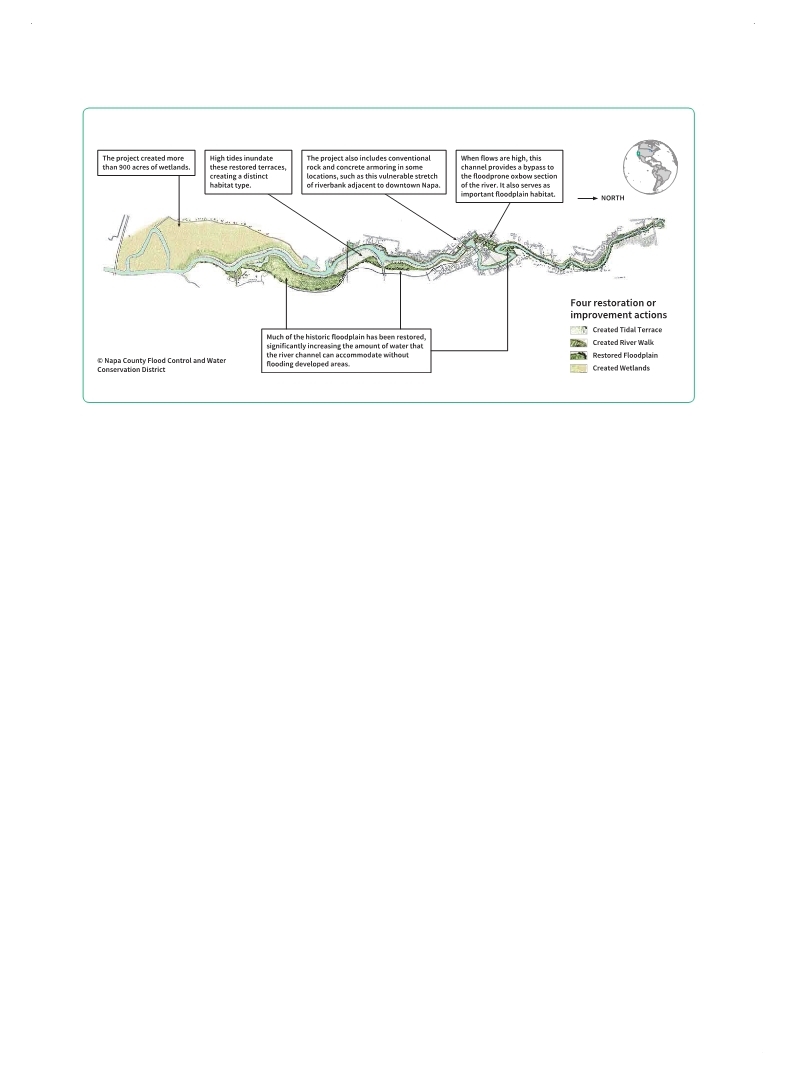 |
Global Assessment Report on Disaster Risk Reduction 2015
Making development sustainable: The future of disaster risk management |
 |
Global Assessment Report on Disaster Risk Reduction 2015
Making development sustainable: The future of disaster risk management |
|
|

238
Part III - Chapter 12
Mekong River Commission’s Water Resources Management-based Basin Development Strategy are examples of such strategies with significant spatial coverage and high levels of ambition (European Commission, 2007
European Commission. 2007,Directive 2007/60/ EC of the European Parliament and of the Council of 23 October 2007 on the assessment and management of flood risks, Official Journal of the European Union. L 288/27, 6 November 2007.. . MRC (Mekong River Commission). 2010,Mekong Integrated Water Resources Management Project, Inception Report. Final Version Prepared by: Mekong Integrated Water Resources Management Project, Mekong River Commission Secretariat. September 2010.. . Similarly, national and regional approaches to incorporating disaster risk reduction into environmental management can be found in the context of forest fire management (e.g. in Jamaica and Lebanon), coastal zone management (e.g. in Belize, Viet Nam and Kenya), and protected areas management (e.g. in Mali, New Zealand and Nepal) (
 UNEP, 2014 UNEP, 2014 UNEP (United Nations Environment Programme). 2014,Disaster risk reduction is an integral objective of environment related policies and plans, including for land use natural resource management and adaptation to climate change, Background Paper prepared for the 2015 Global Assessment Report on Disaster Risk Reduction. Geneva, Switzerland: UNISDR.. UNEP (United Nations Environment Programme). 2014,Disaster risk reduction is an integral objective of environment related policies and plans, including for land use natural resource management and adaptation to climate change, Background Paper prepared for the 2015 Global Assessment Report on Disaster Risk Reduction. Geneva, Switzerland: UNISDR.. Click here to view this GAR paper. However, there are still only few examples of integrated community-level approaches that have been scaled up with success. One exception is the grassroots approach to water management at the border between Guatemala and Mexico, where local initiative has turned into national strategy (IUCN, 2012
IUCN (International Union for Conservation of Nature). 2012,Tacaná Watersheds Guatemala & Mexico: Transboundary water governance and implementation of IWRM through local community action, IUCN Water Programme. Demonstration Case Study No. 5. Water and Nature Initiative.. . and non-governmental organizations at the subnational level. The success of this coordination led to replication in other municipalities and ultimately to the creation of a national micro-watershed commission in Guatemala (ibid.).
Ecosystem approaches to disaster risk reduction
Another practice with enormous potential which hasyettobefullyrealizedisthatofpaymentforecosystem services (UNISDR, 2009a
UNISDR. 2009a,Global Assessment Report on Disaster Risk Reduction: Risk and Poverty in a Changing Climate, Geneva, Switzerland: UNISDR.. .  UNEP, 2014 UNEP, 2014 UNEP (United Nations Environment Programme). 2014,Disaster risk reduction is an integral objective of environment related policies and plans, including for land use natural resource management and adaptation to climate change, Background Paper prepared for the 2015 Global Assessment Report on Disaster Risk Reduction. Geneva, Switzerland: UNISDR.. UNEP (United Nations Environment Programme). 2014,Disaster risk reduction is an integral objective of environment related policies and plans, including for land use natural resource management and adaptation to climate change, Background Paper prepared for the 2015 Global Assessment Report on Disaster Risk Reduction. Geneva, Switzerland: UNISDR.. Click here to view this GAR paper. UNISDR. 2011a,Global Assessment Report on Disaster Risk Reduction: Revealing Risk, Redefining Development, Geneva, Switzerland: UNISDR.. . New approaches also blend grey and green infrastructure in a way that maximizes different ecosystem services, including the reduction of flood risks. For example, in Napa Valley, California, green infrastructure in the form of wetlands creation and protection as well as floodplain restoration is combined with a set of grey infrastructure investments such as conventional rock and concrete flood protection (Figure 12.7).
Figure 12.7 Living river flood control through green-grey infrastructure, Napa Valley, California
(Source: Conservation International, 2014.)
|
 
Page 1Page 10Page 20Page 30Page 40Page 50Page 60Page 70Page 80Page 90Page 100Page 110Page 120Page 130Page 140Page 150Page 160Page 170Page 180Page 190Page 200Page 210Page 220Page 228Page 229Page 230Page 231Page 232Page 233Page 234Page 235Page 236Page 237Page 238Page 239->Page 240Page 241Page 242Page 243Page 244Page 245Page 246Page 247Page 248Page 249Page 250Page 251Page 252Page 260Page 270Page 280Page 290Page 300Page 310
|
|
 
|
 
|
